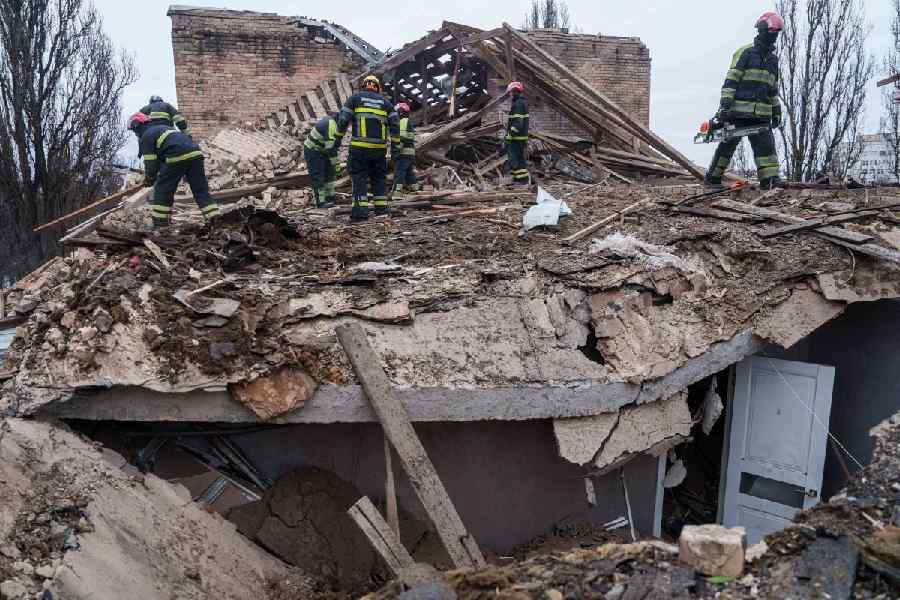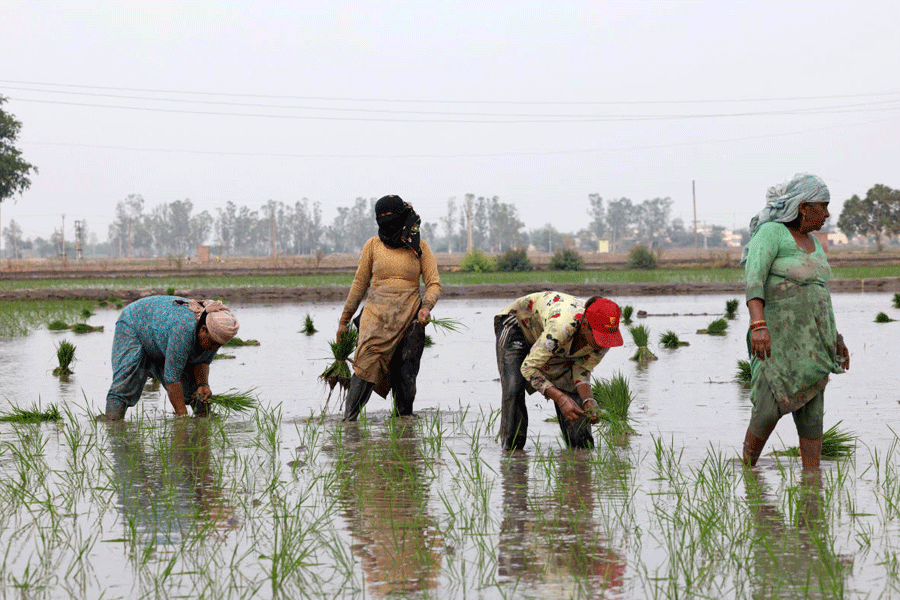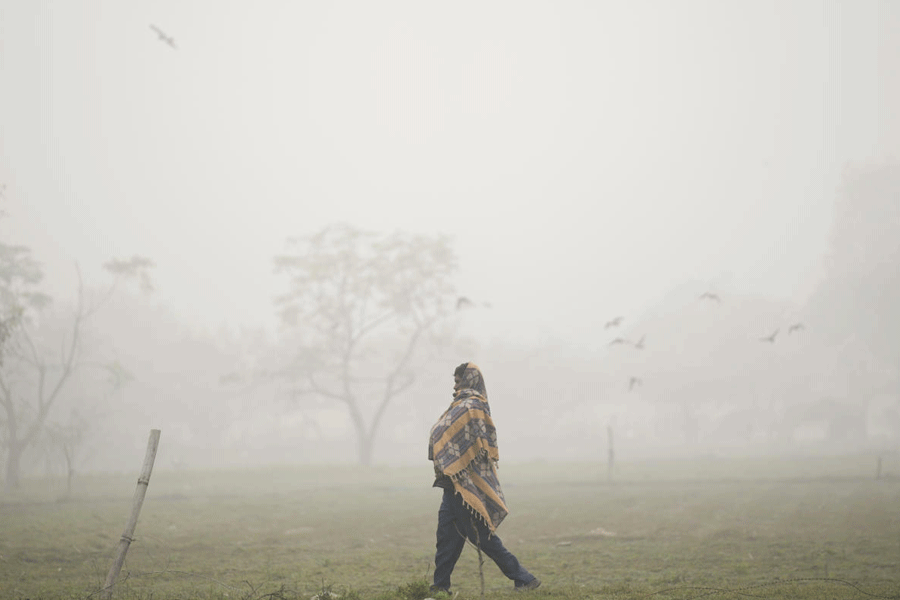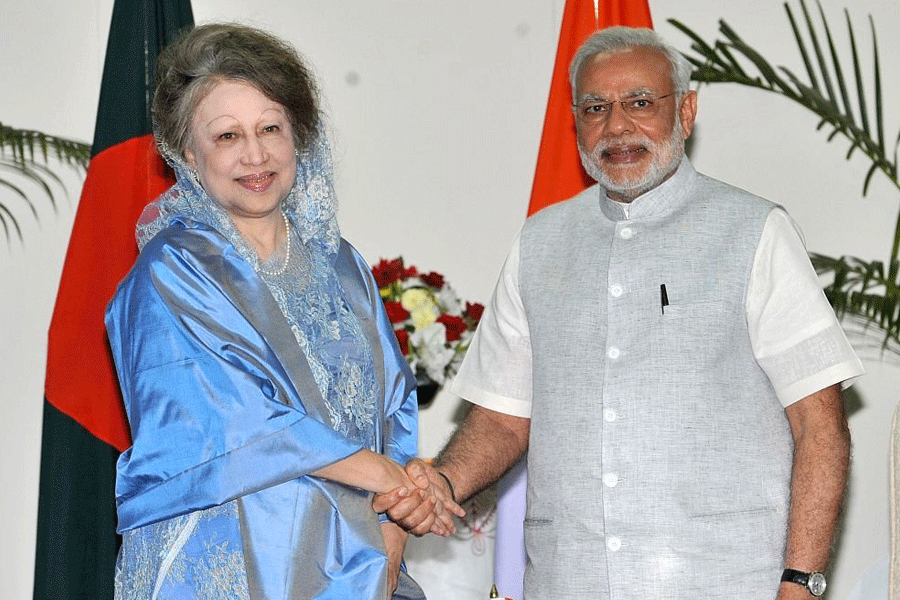 |
| A village crowd watches a Chadar Badar show. Picture courtesy Ravi Kant Dwivedi |
Ranchi, Jan. 6: Clay animation, meet your great-great grandparent.
This is indigenous animation at its best — figures that dance in such perfect and continuous synchrony that they appear to be automated.
Chadar Badar or Santhal puppetry, a rare and obscure form of performing art, is on revival route. It recently debuted on a prestigious platform — Indira Gandhi National Centre for the Arts — between October 20 and November 20, 2010, at the Akhyan festival dedicated to folk art, including masks, scroll paintings and puppetry.
And the person responsible for the renaissance is New Delhi-based artist and cultural ethnographer Ravi Kant Dwivedi, who has been nurturing its practitioners and getting them to train fresh talent in the hinterlands.
What Dwivedi found fascinating about the puppets were their intricate workmanship. “This is tribal engineering at its best. While puppets, made of bamboo or wood and around nine inches high, are placed on a small platform with a canopy, the string, lever and sticks kept underneath are covered by a chadar or wrap. The puppeteer tugs the string which turns the lever, moving sticks up and down, causing the puppets’ limbs to move,” he told The Telegraph over phone from New Delhi.
Accompanied by song, flute and drumbeats, the puppets create an illusion of a rhythmic Santhal dance.
“Making the puppets is a key aspect of Chadar Badar,” said Dwivedi, an artist trained at Kala Bhavan, Santiniketan, who has been intrigued by the form ever since he stumbled on it way back in 1985.
During one of his Dumka trips, Dwivedi, then a young man, noticed a dismantled but intricate puppetry set tucked away in a thatched hut at Noasar village. “But I failed to gather printed material on this form at Anthropological Survey of India, Asiatic Society and Indian Museum during my research and documentation of Chadar Badar for the National Handicraft and Handloom Museum, New Delhi. Not many Santhals knew about it, either,” Dwivedi said. “But interestingly, references were found in Santhali dictionaries by J. Campwell and B.O. Bodding,” he added.
The reason for this obscurity could be that only a handful of Santhals performed this form, and that too only for a few days during Dasain festival held around Durga Puja.
Its revival became Dwivedi’s lifelong mission — locating surviving puppeteers and nurturing their craft.
Finally, in 2009, a four-month workshop was held at Santiniketan, with Dwivedi as its director. With collaborators such as Asian Heritage Foundation, New Delhi, and Sir Dorabji Tata Trust, Mumbai, the workshop roped in master trainers Bulu Murmu and Som Murmu from Dumka to teach eight Santhal youths how to make puppets.
The youths, two each from four districts in Jharkhand and Bengal — Som Marandi and Santosh Soren (Dumka), Arjun Soren and Sahadeo Murmu (Deoghar), Sukur Murmu and Sanatan Murmu (Birbhum), and Rabin Hembrom and Anil Hansdah (Burdwan) — learnt to make puppets with their intricate lever-controlled mechanisms.
Bulu, Santosh and a three-member accompanying team trained by Santosh, performed at the Indira Gandhi National Centre for the Arts. And at the grassroots, too, the form is enjoying a second coming. The youths are now performers in their villages.
“Though I can’t always keep track, I am told that three of the trained youths have performed during the last Dasain festival,” said Dwivedi.











